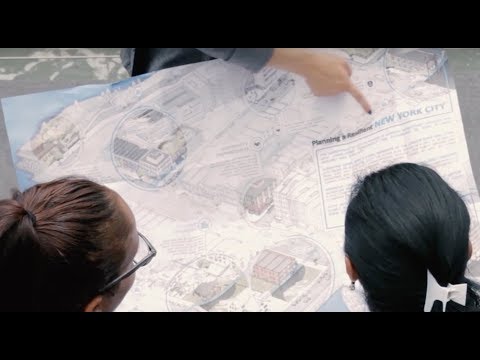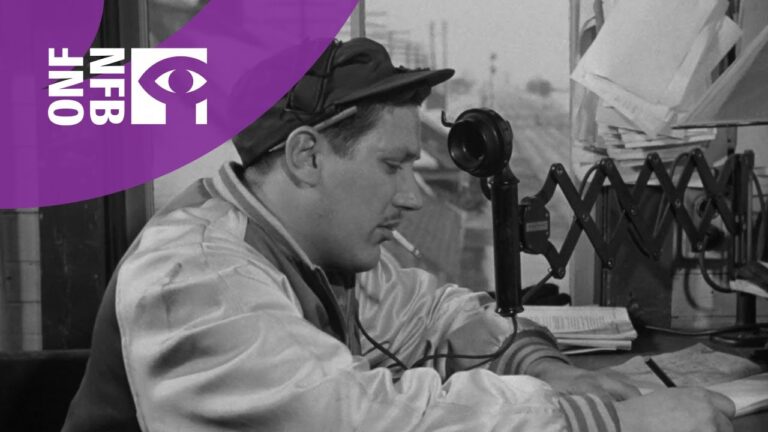Discover the World of Urban Planning: Job Description and Salary
Urban Planner Job Description
An Urban Planner is responsible for analyzing and developing plans for the efficient use of land and resources in urban areas. Their main goal is to create sustainable and functional communities that meet the needs of the population. Urban Planners collaborate with government officials, architects, engineers, and community members to design and implement projects that promote economic growth, environmental sustainability, and social equity.
The duties of an Urban Planner include conducting research, collecting data, and analyzing demographic, economic, and environmental factors that impact urban development. They also assess the current infrastructure, zoning regulations, and land use policies. Based on their findings, Urban Planners create comprehensive plans that address transportation, housing, recreation, and public services.
Urban Planners must possess strong analytical and problem-solving skills, as well as excellent communication and interpersonal abilities. They should stay updated on the latest trends and technologies in urban planning and be able to integrate innovative solutions into their projects. Additionally, attention to detail and the ability to work under pressure and meet deadlines are crucial in this role.
As for the Urban Planner Salary, it can vary depending on factors such as experience, education, location, and the employing organization. On average, Urban Planners earn a competitive salary, with entry-level positions starting around $50,000 per year. However, with experience and expertise, urban planners can earn upwards of $100,000 annually.
In conclusion, Urban Planners play a vital role in shaping and improving urban communities. Their job description involves analyzing and designing sustainable plans, while their salary reflects the importance and complexity of their work.

Urban Planner Job Description Template
Urban Planner Job Description
An urban planner is a professional who is responsible for designing and developing plans and policies for the use of land within urban areas. Their main goal is to create sustainable, functional, and aesthetically pleasing urban environments that meet the needs of the community.
One of the key responsibilities of an urban planner is to analyze data and conduct research to understand the current state of the urban area. This includes studying population growth, land use patterns, transportation systems, and environmental factors. Based on this analysis, they develop plans and policies to guide future development and address issues such as housing, transportation, and infrastructure.
Another important aspect of the job is community engagement. Urban planners work closely with local government officials, community organizations, and residents to understand their needs and incorporate their input into the planning process. This involves conducting public meetings, workshops, and surveys to gather feedback and ensure that the plans developed reflect the aspirations and concerns of the community.
Urban planners also collaborate with architects, engineers, and other professionals to ensure that the plans are technically feasible and implementable. They review proposed projects and assess their impact on the urban environment, making recommendations for improvements or modifications.
In summary, urban planners play a crucial role in shaping the future of cities and towns. They use their expertise in land use, design, and community engagement to create sustainable and livable urban environments that promote economic growth, social equity, and environmental stewardship.
Urban Planner Responsibilities
Urban Planner Requirements
How Much Does A Urban Planner Make?
Urban Planner Salary
| City | State | Salary |
|---|---|---|
| New York City | New York | $76,340 |
| Los Angeles | California | $68,200 |
| Chicago | Illinois | $65,230 |
| Houston | Texas | $62,410 |
An urban planner’s salary can vary depending on factors such as location, experience, and education. The table above provides an overview of the average salaries for urban planners in different cities and states. It is important to note that these figures are just averages and individual salaries may differ. Urban planners play a crucial role in designing and developing cities, ensuring efficient land use, transportation systems, and sustainable growth. They work closely with government agencies, architects, and community members to create plans that enhance the quality of life in urban areas.
Urban Planner Salaries by Country
Top Paying Countries for Urban Planner
| Country | Median Salary | Annual Salary Range |
|---|---|---|
| United States | $75,000 | $50,000 – $100,000 |
| Canada | $70,000 | $50,000 – $90,000 |
| Australia | $65,000 | $45,000 – $85,000 |
| United Kingdom | $60,000 | $40,000 – $80,000 |
| Germany | $55,000 | $35,000 – $75,000 |
An urban planner plays a crucial role in shaping the development of cities and communities. They are responsible for designing and implementing plans that promote sustainable urban growth and improve the quality of life for residents. The salaries for urban planners vary across countries, with the United States being one of the top paying countries, offering a median salary of $75,000 per year. Canada, Australia, United Kingdom, and Germany also offer competitive salaries ranging from $55,000 to $70,000. These countries recognize the importance of urban planning and value the expertise and skills of urban planners in creating livable and thriving cities.
A video on the topic Urban Planner
Video Source : Careers and Personal Finance by Khan Academy
Interview Questions for Urban Planner
1. What is the role of an urban planner?
An urban planner is responsible for designing and developing land use plans and programs for cities and communities. They analyze various factors such as population growth, transportation needs, environmental impact, and economic development to create sustainable and functional urban spaces.
2. What skills are important for an urban planner to possess?
Important skills for an urban planner include strong analytical and problem-solving abilities, excellent communication and presentation skills, proficiency in data analysis and GIS software, knowledge of zoning and land use regulations, and the ability to work collaboratively with diverse stakeholders.
3. How does an urban planner contribute to community development?
An urban planner contributes to community development by creating plans that improve the quality of life for residents. They assess the needs of the community, identify areas for improvement, and develop strategies to enhance transportation systems, affordable housing, public spaces, infrastructure, and economic opportunities.
4. Can you explain the concept of sustainable urban planning?
Sustainable urban planning involves designing cities and communities in a way that minimizes environmental impact, promotes resource efficiency, and enhances social equity. It focuses on creating walkable neighborhoods, reducing greenhouse gas emissions, preserving green spaces, and implementing renewable energy sources.
5. How do urban planners address transportation challenges?
Urban planners address transportation challenges by developing comprehensive transportation plans that consider multiple modes of transportation such as walking, cycling, public transit, and private vehicles. They aim to reduce traffic congestion, improve accessibility, and promote sustainability through initiatives like bike lanes, pedestrian-friendly streets, and efficient public transit systems.
6. What is the importance of public participation in urban planning?
Public participation in urban planning is crucial as it ensures that the needs and preferences of the community are considered in decision-making processes. It allows residents to voice their concerns, provide feedback, and actively contribute to shaping their neighborhoods. This leads to more inclusive and equitable urban development.
7. How do urban planners address affordable housing issues?
Urban planners address affordable housing issues by conducting housing needs assessments, identifying suitable sites for affordable housing projects, and implementing policies that promote affordable housing development. They collaborate with housing organizations, developers, and government agencies to ensure that affordable housing options are available for all income levels.
8. What are the challenges faced by urban planners in today’s world?
Some of the challenges faced by urban planners today include rapid urbanization, climate change, limited resources, social inequality, and technological advancements. They must find innovative solutions to accommodate growing populations, mitigate the effects of climate change, and create sustainable and resilient cities.
9. How does urban planning contribute to economic development?
Urban planning contributes to economic development by attracting investments, creating job opportunities, and promoting entrepreneurship. By designing vibrant and well-connected urban spaces, urban planners can attract businesses, support local industries, and enhance the overall economic vitality of a city or community.
10. Can you explain the concept of mixed-use development in urban planning?
Mixed-use development refers to the integration of different land uses within a single area, such as combining residential, commercial, and recreational spaces. This approach promotes walkability, reduces the need for long commutes, and creates vibrant and diverse neighborhoods. It also allows for a better utilization of land and resources.






